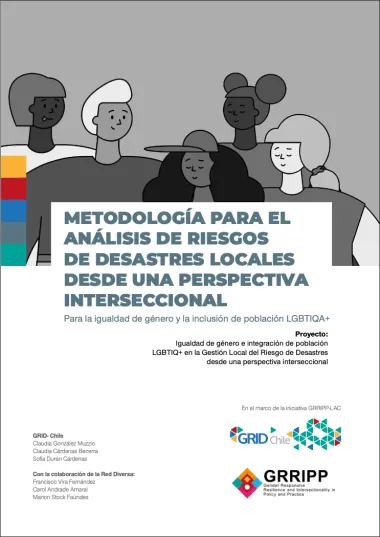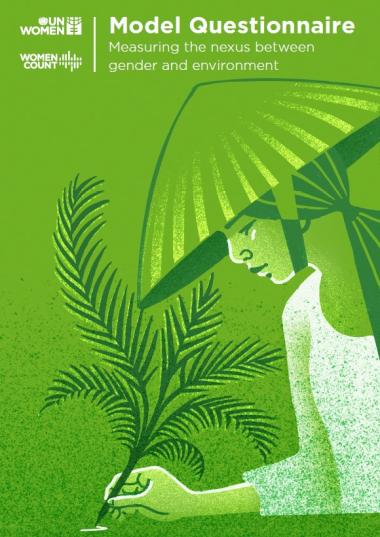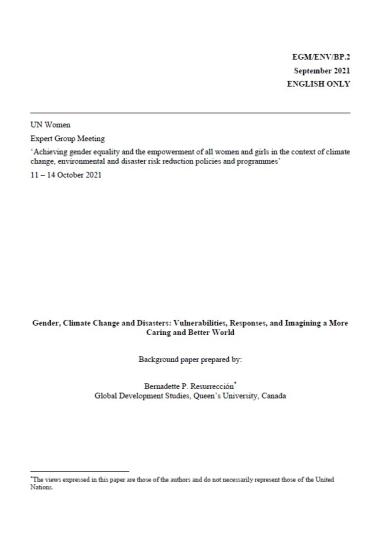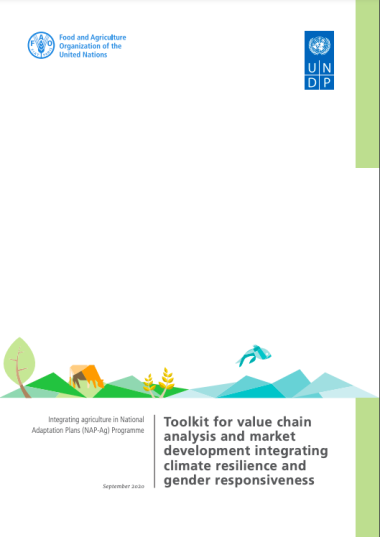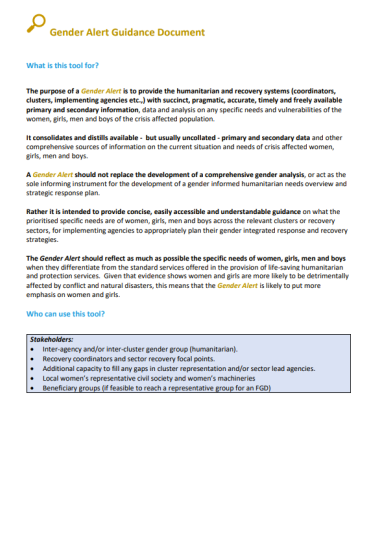
Gender-responsive risk assessment
Disaster risk and capacity assessments employ qualitative and quantitative approaches to determine the nature and extent of risks by analysing potential hazards (i.e. hydrometeorological, geophysical, biological, or technological) and evaluating existing conditions of exposure and vulnerability that together could harm people, property, services, livelihoods and the environment on which they depend. They can be carried out at different levels from the project or community level through to the sector or national level. For example, at the project level, risk and capacity assessments can enable the development of appropriate mitigation measures for implementing safe and sustainable programmes that build resilience for all, rather than increasing exposure or vulnerability of certain groups. Too often however, risk assessments fail to unpack the differing exposure, vulnerabilities, and capacities of women, people living with disabilities, and other high-risk groups.
Ideally risk assessments are multi-hazard and integrated with ongoing developing planning, programming and community identified priorities. Standalone climate change vulnerability assessments or capacity and vulnerability analysis are increasingly used however, as an initial step in adaptation planning processes or informing local and national disaster action plans. It is important that whether integrated or standalone, risk, capacity, and vulnerability assessments are gender-responsive and inclusive. Otherwise, for example climate change adaptation can be maladapted to specific sections of a community, especially people who are already disadvantaged, including women. Furthermore, if these assessments are not based on gender analysis, there is a risk that they will miss gendered impacts of harmful practices or lack identification of measures needed to address gendered climate-related risks such as increased gender-based violence.
Gender analysis is therefore an important technique in risk assessments, needs assessments, and gender-responsive decision-making processes. It takes into account structural inequalities and the specific and differing needs and perspectives of women and girls, men and boys, and people of diverse genders in a specific context. For example, the collection of disaggregated quantitative and qualitative data combined with gender analysis can unpack the root causes of gendered vulnerability to disaster and climate risks. Understanding the root causes of vulnerability, including gender inequality, socio-economic disparity, access and control over resources, is vital for inclusive and equitable processes and outcomes and therefore essential for comprehensive gender-responsive and inclusive risk assessments.

